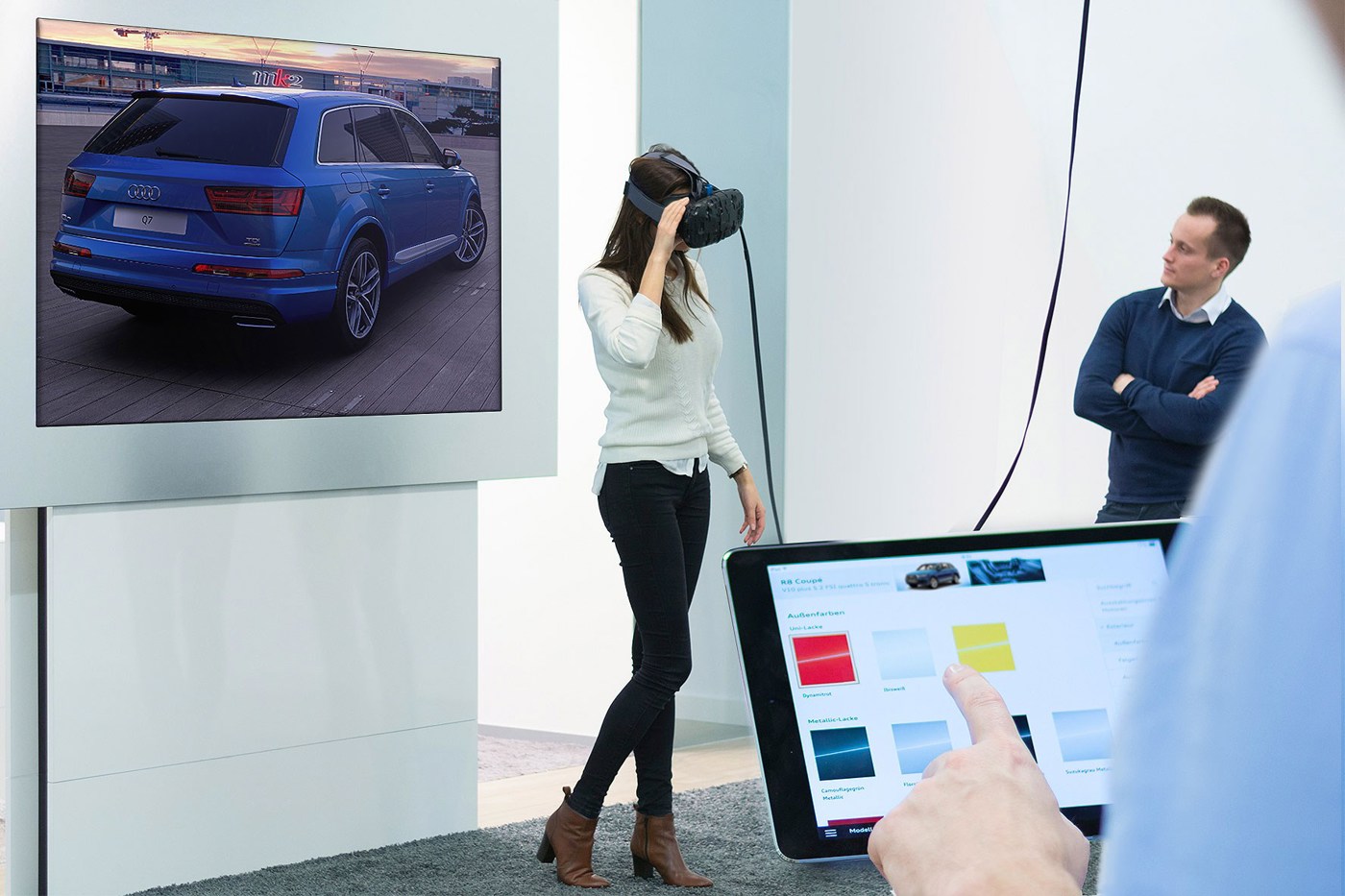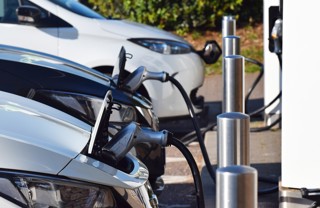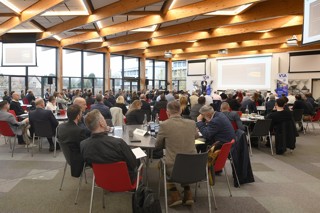If the predictions of BBC TV’s Tomorrow’s World 40 years ago had been correct, we might have already had a few years of robot salespeople in high street retail and personal hover-cars parked at our homes.
While that turned out to be a little too far-fetched, we do have cars that can communicate, 24-hour self-service shopping and the ability to buy a product and have it delivered within hours. Plus, there’s more computing power in that little device in our back pockets than any child getting to grips with their school’s sole BBC Micro in the early 1980s would ever have imagined possible.
Today, most consumers are doing their ‘tyre-kicking’ online, and carmakers still seem enthralled by the role of the tablet computer in the dealership. But 10 years ago, who predicted sales executives with iPads and desk-free showrooms?
More changes, and more technology, seems destined for franchised dealerships.
“The automotive retail industry is still behind where other retail industries are in terms of their digital capabilities” Karolina Edwards-Smajda, Auto Trader
Paul Gordon, Autotorq managing director, said: “Unlike all other forms of retail, automotive still operates as it always did.
“The fundamental changes in consumer buying behaviour that resulted in Amazon becoming the largest retailer in the world and Woolworths, MFI and British Home Stores all going into receivership are yet to really impact on the buying, selling and servicing of cars.”
So what lies in tomorrow’s world for automotive retail? By 2025, the dealership will be mostly paperless, it will put customers first and it will engage them on their terms.
As the consumer arrives on site, technology will allow the dealership to detect which points in the buying journey have already been completed, so staff can tailor their approach and provide a seamless experience.
More control will have passed to the consumer to ‘self-checkout’ their payment for deposits or servicing, through their contactless smartphone either online or at a touch-screen service point. Some customers will already have applied for their motor finance product via the dealer’s online finance portal, and will be ready to collect.
For those customers who still visit showrooms early in their search, there will be large touch-screen devices with stock selectors, finance calculators and in-depth detail of other services. On the forecourt, weatherproof touch-screen portals will enable a customer to place a contactless deposit against their chosen used car.
Karolina Edwards-Smajda, Auto Trader retailer and consumer products director, said consumers expect technological progress when dealing with a retailer and dealerships in 2025 will match those expectations, including offering greater transparency.
She said: “It all comes down to trust and making the online experience line up with the experience in the dealership.
“As long as customers feel comfortable with pricing and trust the business, we will start to see more of that process handed over to them.”
Future DMS and CRM systems
In order to achieve this, the dealer management system will have become more embracing of third-party applications, and will have had to open up the lines of communication between the dealership, vehicles and customers’ smartphones. Staff will finally have a single home for customer data, with marketing departments able to build a better picture of who the customers are.
The squabble over whether the dealer or carmaker ‘owns’ that data will have to end, said ICDP managing director Steve Young. He believes consumers in 2025 won’t put up with the disconnect between their activity with the brand and with the dealer.
Neil Packham, vice-president and managing director, UK region for CDK Global, acknowledged that there are still hurdles to overcome before this technology becomes widely available.
He said: “There are privacy issues that will have to be addressed when contacting consumers and tracking vehicle diagnostics. A standardised approach is needed between all vehicle manufacturers and software providers to ensure the easy and accurate flow of information.”
Packham also said DMS systems of the future will have to be fully integrated across all technology platforms to capture and monitor customer data from any point during the customer journey. This will help make customers’ experiences personalised, no matter what dealership they visit.
Packham said: “A fully integrated DMS system will be essential for helping dealers and product experts avoid silos of data and provide a seamless customer journey, whether they are buying a new car, require aftersales service or car maintenance.”
“A fully integrated DMS system will be essential for helping dealers and product experts avoid silos of data and provide a seamless customer journey” Neil Packham, CDK Global
James Hill, Dealerweb sales operations director, agreed that full integration between dealer software providers will be at the heart of any changes to automotive retailing in the coming years. This will dovetail with dealers moving more back office services online.
Hill said: “We’re seeing a trend of dealers increasingly adopting systems to manage specific areas of the dealership, such as showroom management, with these systems communicating seamlessly with one another via the internet.
“There is no one solution that excels in all areas of dealer operations, but current and future technology will allow for specialist providers to work as one fully integrated technology platform.”
Hill wants to see the UK market move to a similar model as the US by 2025, with DMS providers allowing full integration with bolt-on software providers to feed data back and forth.
Alan Crane, Bluesky Interactive managing director, believes better links with dealer back-office systems and communication with customers’ smartphones will increase.
He said: “The digitally aware dealers Bluesky works with understand the success rate of the traditional hard-sell approach is in decline. The most successful sales staff empower their customers with the information they need to make a decision, and should do so using the channels and devices that buyers use most often.”
Bluesky already offers technology that lets dealer staff send details of specific cars directly to customers’ smartphones. Customers can also contact dealers directly through a ‘text me this car’ feature.
Some suppliers also offer a live chat functionality, where dealers can speak to customers on a smartphone service rather than just limiting it to desktop chats.
Broadcasting and beacons
Dealerships of the future will be able to take advantage of beacon technology that connects to customers’ wearable technology and smartphones.
It will mean that when customers have configured a car online, searched for stock or quoted for finance, all that work can be carried and communicated to the dealership’s systems as soon as they walk through the door.
Gordon said forcing consumers to repeat that process once they enter a dealership turned “excitement to frustration”.
Apple Stores in the US use a system called iBeacon – short-range, Bluetooth, low-energy transmitters that can notify mobile devices when they come within 100 feet. Proximity can be fine-tuned so, in theory, the sales area, used car area or service desk can each connect with customers’ mobile phones.
Dealerships could send customers current finance offers for cars they are walking past, prepare pre-ordered parts for collection the minute someone comes through the door or even let customers pay for servicing through their smartphone as soon as they arrive to collect their car.
Virtual reality
With companies such as Facebook, Sony, Google and Samsung investing billions of pounds in virtual reality (VR), it’s worth taking notice of something that could become part of customers’ shopping experiences over the next 10 years.
Industry experts expect 12 million VR headsets to be in use by 2017 and, by 2020, it’s estimated that VR will be a £20bn industry.
While Gordon believes VR may take off with a certain demographic, he is still not convinced it will play a major role in dealerships, due to bulky headsets and headphones being a barrier to entry for older generations in particular.
However, some manufacturers have already invested in dealership VR technology.
Audi has a prototype VR project with ZeroLight at its Audi City showroom, which will be introduced in “select” dealerships.
Customers will be able to use a VR headset to move around vehicles, sit in the driver’s seat or front passenger’s seat and take in all of the visuals of a vehicle’s exterior and interior in high definition. Audi’s head of design can talk the customer through details of the model and then take them for a ‘test drive’.
For a brand such as Audi, with a model range of 52 vehicles and millions of different colours, trims and options, it’s clear VR can save space in locations where square footage comes at a premium. It could mean VR showrooms are likely to be introduced to manufacturer’s brand centres located in smaller shopping locations first, rather than standard dealerships.
Volvo is working on its own version of virtual reality in association with Microsoft Hololens.
Rather than enclose customers within a headset and screen, Hololens goggles project holographic images on top of surfaces and objects in the real world. Only the person looking through the goggles can see the projection.
Nina Larsen, Volvo Cars director retail marketing, said: “The Hololens can allow our customers to see features, colours and options. So rather than working on a tablet or computer, the customer can actually be part of the experience.”
Crane expects VR features to make their way into showrooms within the next 10 years.
He said: “Dealers will have addressed the long-term trend for declining footfall by transforming their showrooms into digitally enabled premises that enhance and add theatre to the buyer’s visit.
“VR apps, for instance, are already spearheading the drive to a more immersive experience for buyers.”
Crane acknowledges that VR technology is currently too expensive for most dealers to roll out, but economies of scale will reduce the price over the next decade and could make it viable even for smaller dealers and independents.
Visualise, a London-based VR production company has already worked on projects with Land Rover, Audi, Mercedes-Benz and Lamborghini.
A recent project with Thomas Cook on “try before you fly” VR demos of holidays increased sales by 190%.
Henry Stuart, Visualise chief executive, said the retail industry can expect VR to become even more sophisticated in the next 10 years, with the ability for systems to tracks limbs and fingers to a greater level of fidelity to give users more of a physical presence in the virtual world they inhabit. There is even talk of haptic feedback on things such as steering wheels, so customers in VR could feel the vibration of the engine as they’re taking a test drive.
Edwards-Smajda takes a more sceptical view for dealer adoption of VR, bringing things down to earth.
She said: “I’m sure VR will take off, but this will be led by manufacturers. The automotive retail industry is still behind where other retail industries are in terms of their digital capabilities.
“Dealers right now are still struggling to get enough decent high quality images and video to go with their adverts online. I think a VR walkaround of used stock is still probably some way off.”






















Tom Anderson - 07/07/2016 19:28
Thank God I won't be around to take part in any of this . All this would put you off buying anything. With any luck we will go back to talking to each other